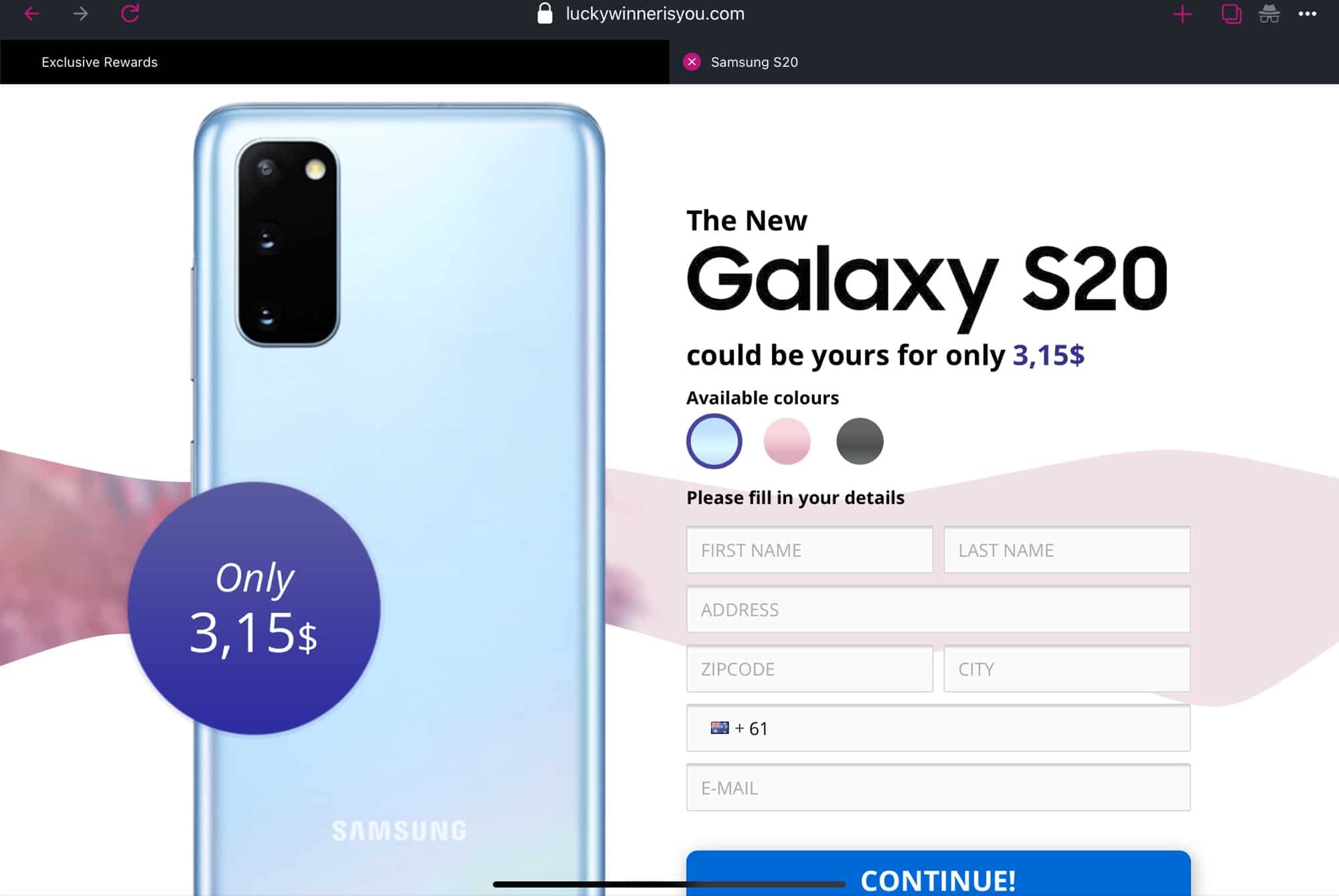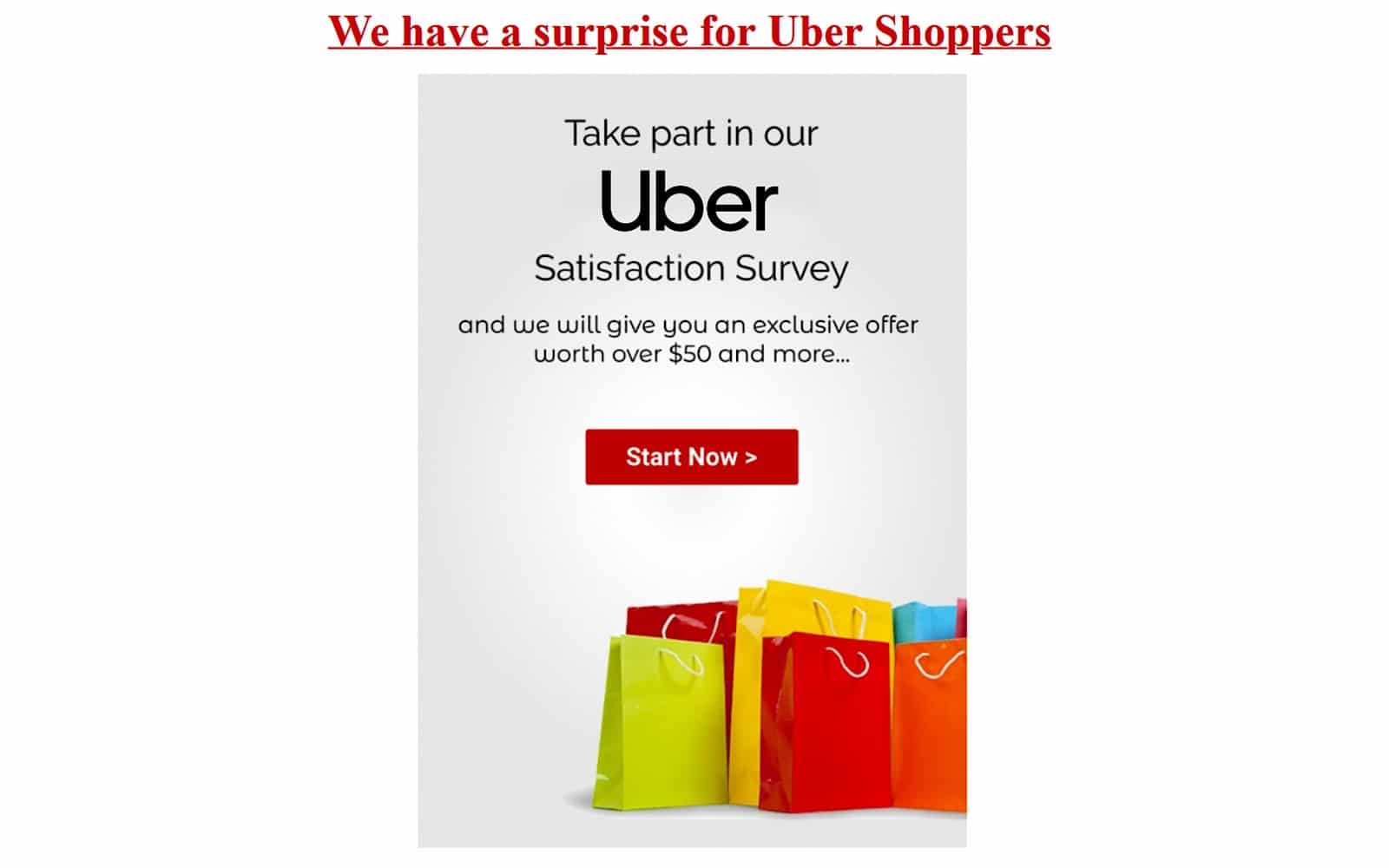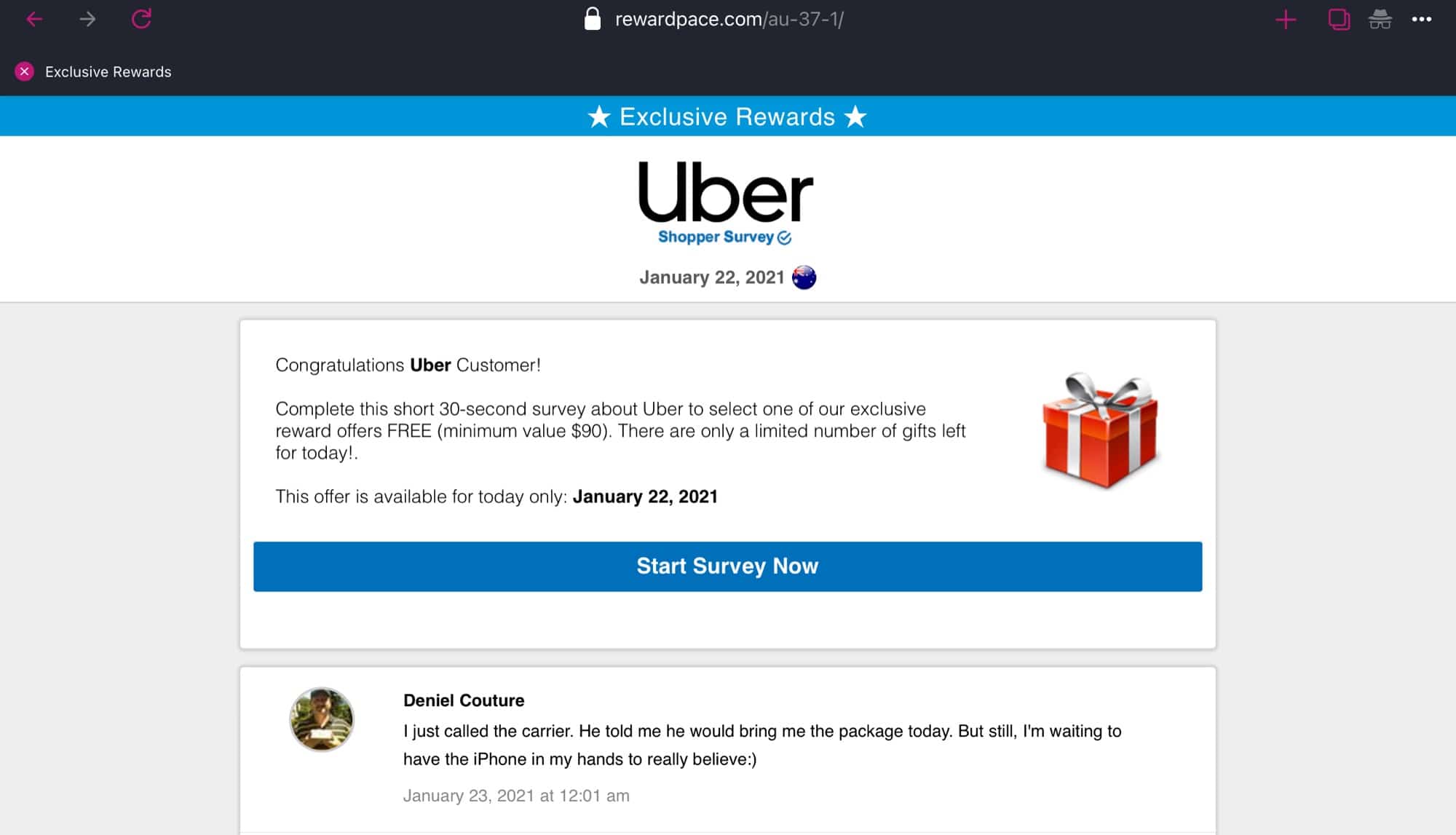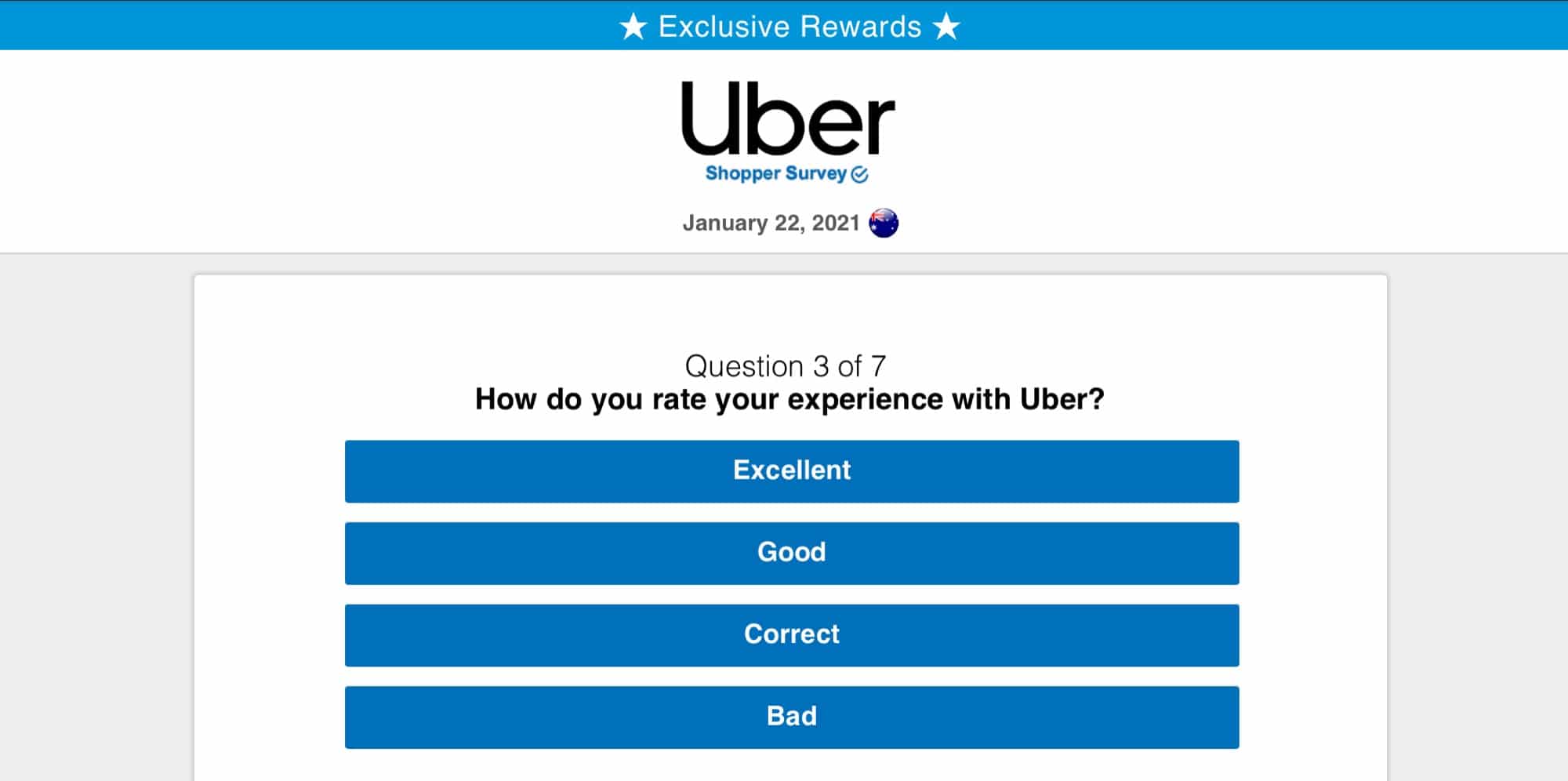We’ve seen Woolworths email scams this week, and now the same scammers are going after a different target: Uber users.
There’s a new scam target that appeared in our inboxes this week, and one that we’ve not seen before, as the scammers seemingly behind a recent Woolworths scam focus on Uber now, too.
It felt like just yesterday we started seeing the Woolies scam appear, and yet today, there’s a different target. Presumably, it seems there’s no specific day when scammers aren’t operating, because ripping off people is an everyday thing. For everyone else — for anyone who could be the target of scammers — it means being vigilant and making sure you don’t click is also an everyday thing.
So let’s break down this scam bit by bit to stop you from clicking, and to help you know that it’s safe to delete it ASAP.
What is this Uber email scam, and how can you tell the signs?
The “Uber Shoppers” scam
We’re just going to call this the “Uber Shoppers” scam because of the bright red text sitting in the email, which is very much like the “Woolworths Shoppers” email we saw the other day. It is almost identical, suggesting the same creators, because it is pretty much the same scam, but with a new hat.
This Uber email scam is not complex, and gives all the warning signs to not click, but because it’s a new target, it might be a little difficult to work out what’s going on.
Essentially, it’s the same concept: click on the link, and you’ll be redirected to a fake Uber site which acts as a phishing site, waiting for you to enter details and potentially lose out big later on when the scammers decide to use them for something.
However because it’s a new target, it might be easy to think this scam is real, so we’ll break it down bit by bit. Remember that being about to do this comes down to how you identify a scam email, and it’s always the same.
The Uber Shoppers scam email address
We’ll start with the most obvious telltale sign, which is the email address. You can always expand the email address without clicking on a link, because it’s always worth checking who sent you the email.
Scammers can’t use an email from the real company, so they’ll often opt for one of two approaches: either use a similar website address they’ve purchased that you’ll think is similar such as ub3r.com or uberr.net.au, or they’ll use something outlandish hoping you’ll never look at the email address.
Call a scammer’s bluff and check the email address of the person that sent you, because it’s here you can find the scam.
In the Uber Shoppers scam, the email address in the “from” field is a Gmail address, which seems out of kilter from an official Uber email hailing from uber.com. Remember, scammers can’t use the official address, so that’s a dead giveaway that this is a scam.

The subject lines are a little weird
It’s not just the email address, but the subject lines, too. The scammers in these emails are a little focused on telling you that you have a surprise, and while they’re gradually getting better at saying it, the whole thing still feels weird.
“We have a… surprise for UberUsers” feels like the sort of pause an evil genius would say right before the floor fell out from under you and you found yourself falling into a pool or piranhas, only to look up and see the madman laughing. It’s a weird place to put an ellipsis for a pause, the “…” in that subject.
There’s also the matter of “UberUsers” all thrown together, which is likely the scammer’s attempt at getting its unofficial email past an inbox’s spam filters, because it looks like “Uber”, but it’s also not quite.
They’re obvious giveaways this Uber scam is a scam from where we sit, but in case you want to compare it to the almost identical scam sent by the same criminals in the guise of Woolies, take a look at how they sit in the inbox together.

The details of the Uber Shoppers email also read like a scam
We’ll never tell you to click on a scam, but if you did, the inside of the scam email can reveal how scammy it is.
Much like the Woolies one earlier in the week, and like others we saw last year, the text of the email is found behind a giant image advertising a free gift, with a link that sits behind everything.
The text of the email is just an image, and whether you were to touch the appropriated Uber logo, the “Start now” button, or even any of the fake unsubscribe links, you’ll go to the same place, a very un-Uber address of:
That clearly doesn’t look official, and neither does the fact that there are two addresses in the text of the email: one in Florida, and one in Dayton, Ohio.
For a bit of further understanding, Uber’s Australian emails seem to have an address at the bottom, but it’s in Amsterdam. Also, Uber has very specific colouring at the bottom of its emails, with black backgrounds and white text.

What’s in the Uber Shoppers scam link
If you were to accidentally click on that clearly fake and dodgy Uber Shoppers scam link, you’d be taken to a clearly fake Uber scam survey, built in very much the same way as every other scam survey we’ve ever seen.
Some of the details here are pretty obvious, and lead into the the same method for picking up a scammer: much like reading the email address, read the website address. Often called a URL, it’s something a scammer can’t fake.
A scammer can’t just pretend they’re from uber.com, so they’ll often go with something outlandish. In this instance, it’s rewardpace.com. That address could change for you, by the way, as these sorts of scams tend to have several website names, each about as fraudulent as the other.
Beyond the dodgy address, some of the details can seem convincing, such as fake reviews with similar date stamps, and a “Shopping Survey” name with a check mark, as if that some how makes it more authentic (it doesn’t). There’s even a weird survey that has some silly choices, such as asking if your experience with Uber is “Correct” (we had a giggle on that one).
But it’s all a scam to get your name, address, and credit card details to ship you that special gift.
At the end, there’s a scammy check system that does nothing more than animate some text on screen to make you think it’s really doing a security check, and then an assortment of “free” phones that you apparently qualify for, which if you click on, take you to a new site where you’ll be asked to pick a colour, enter your details, and then you’ll be shipping the phone.
Except you won’t: the Uber Shoppers scam is the same scam we’ve seen forever, with the target being your details, and the scammer hoping you’ll believe them.

The Uber Shoppers scam is the same scam with a new design
If you were one of the people who saw the recent Woolworths email scam, or even the JB HiFi SMS scam a week or so before that, this is the same thing: it’s a fraudulent website hoping to ensnare details by looking legit, and yet being anything but.
There’s no such thing as a free lunch, and certainly not a free phone. Uber is not sending you an offer for a free phone, and you should not follow through on this email.
Just delete the email like you would any other, or report it as spam in your inbox, and move on, so as not to be caught in the hundreds of millions Australians lose to scams every year. There’ll be others like it, we suspect, and we’ll write about those, too.












